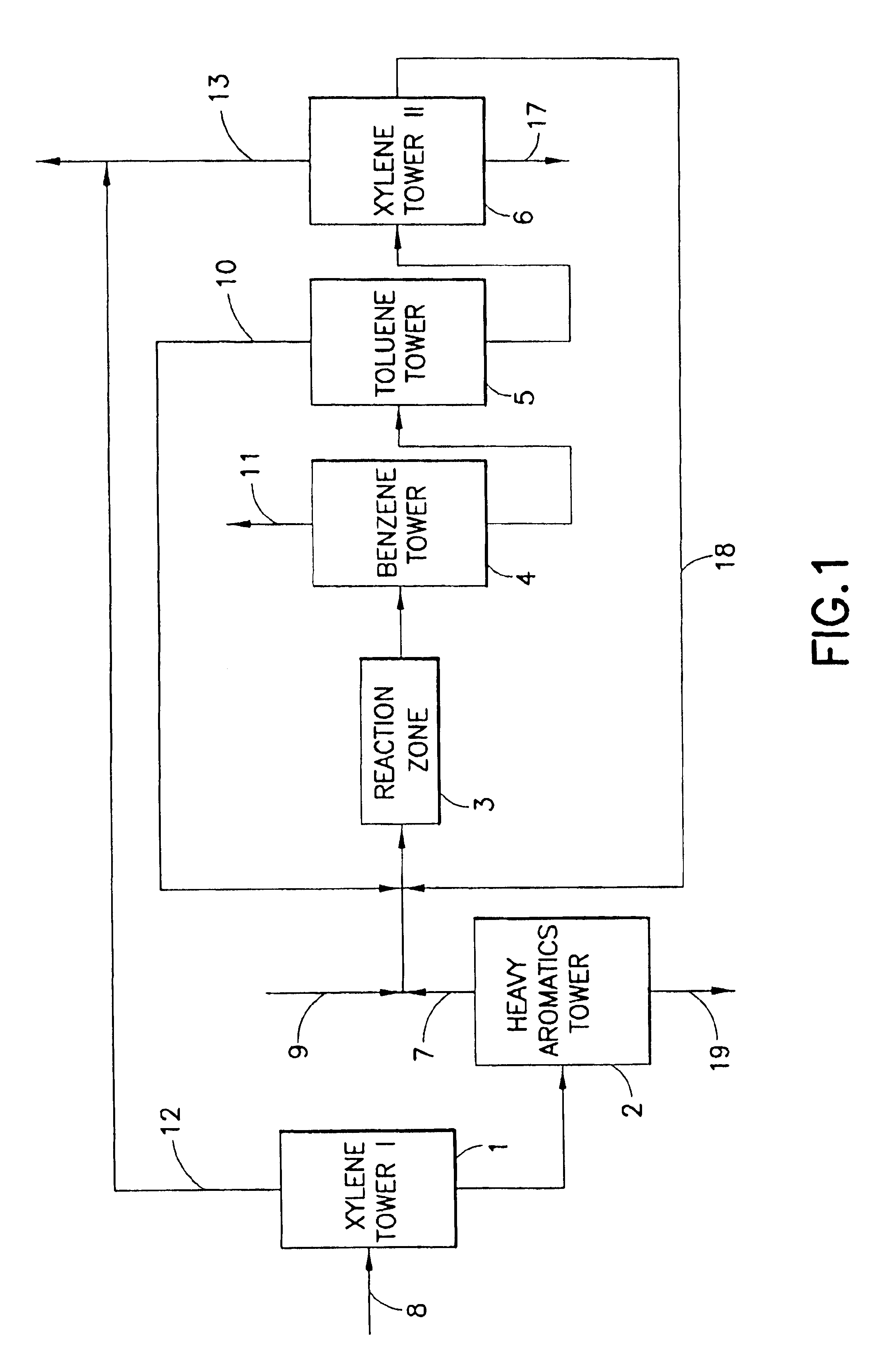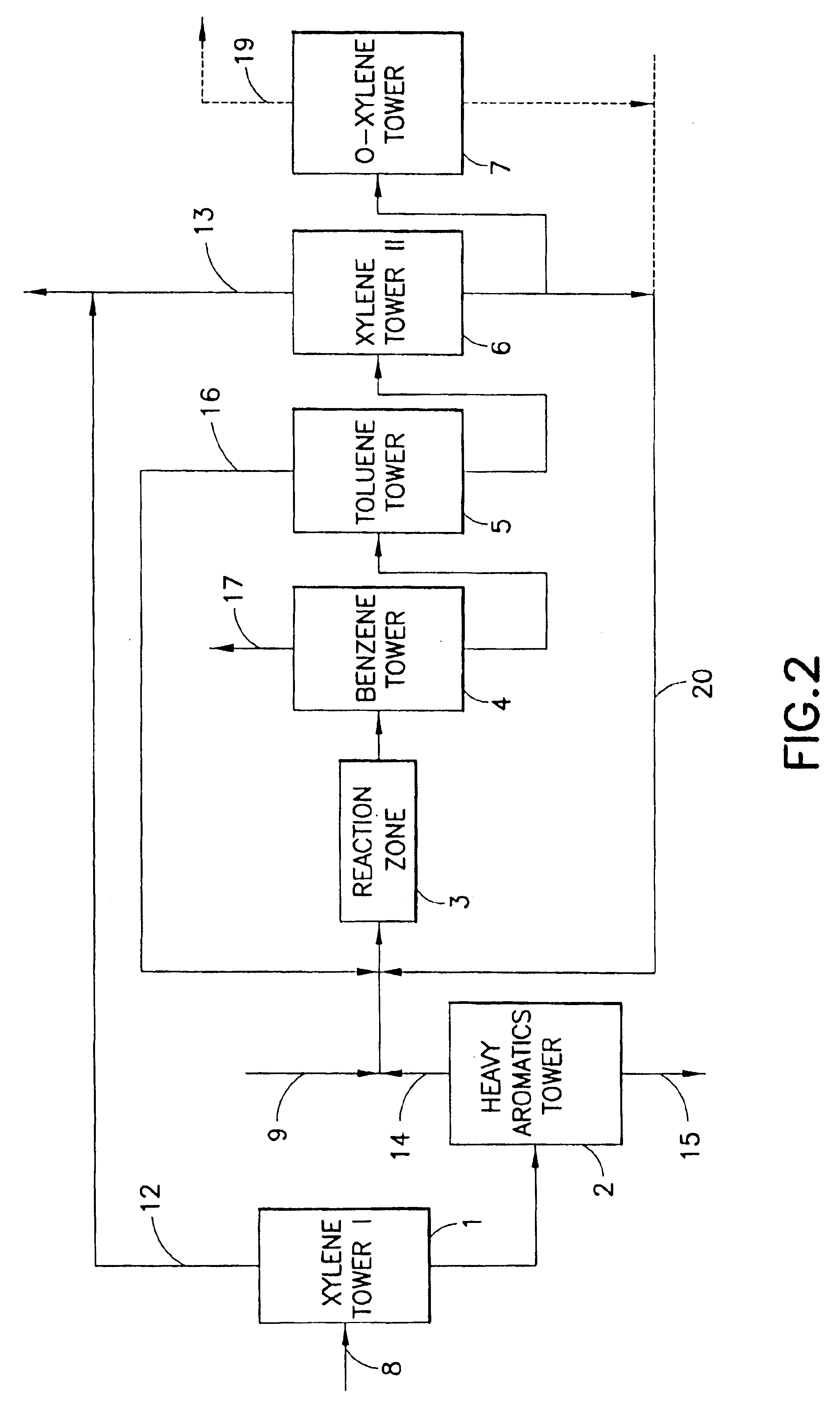Process for producing p-xylene
- Summary
- Abstract
- Description
- Claims
- Application Information
AI Technical Summary
Benefits of technology
Problems solved by technology
Method used
Image
Examples
examples 1-7
The performance for the alkyl transfer reaction between benzene and C9+A was examined in the presence of hydrogen using a fixed-bed reactor. The reactor was made from stainless steel tube with an inner diameter of φ25 mm and a length of 1000 mm. Glass beads of φ3 mm were filled both above and beneath the catalyst bed for distributing and supporting. The reactor was loaded with 20 g of a bismuth-containing macroporous zeolite catalyst. The aromatics feedstock passed through the catalyst bed from top to bottom after mixing with hydrogen to conduct the alkyl transfer reaction between benzene and C9+A yielding toluene and C8A.
Benzene and C9+A in the feed were from a petrochemical aromatics integrated device, and the H2 was electrolyzed hydrogen treated via dehydration for drying. The reaction results are shown in Table 1.
TABLE 1Analysis of feedstock and product compositions in alkyl transfer reactionbetween benzene and C9+A (1-7)Example1234567Main active component ofABBAABBthe catalyst*...
example 8
The toluene selective disproportionation reaction was conducted in the presence of hydrogen using a fixed-bed reactor. The reactor was made from stainless steel tube with an inner diameter of φ25 mm, a length of 1000 mm. Glass beads of φ3 mm were filled both above and beneath the catalyst bed for distributing and supporting. The reactor was loaded with 20 g of a platinum-containing ZSM-5 molecular sieve catalyst. Toluene passed through the catalyst bed from top to bottom after mixing with hydrogen to conduct the toluene selective disproportionation reaction yielding benzene and C8A with a high concentration of p-xylene.
The toluene feedstock was from a petrochemical aromatics integrated device, and the H2 was electrolyzed hydrogen treated via dehydration for drying. The reaction temperature was 420° C., reaction pressure was 1.5 MPa, space velocity was 4.0 h−1, and hydrogen / hydrocarbon mole ratio was 3.0. The results are shown in Table 2.
TABLE 2Result of toluene selective disproporti...
PUM
| Property | Measurement | Unit |
|---|---|---|
| Temperature | aaaaa | aaaaa |
| Temperature | aaaaa | aaaaa |
| Pressure | aaaaa | aaaaa |
Abstract
Description
Claims
Application Information
 Login to View More
Login to View More - R&D
- Intellectual Property
- Life Sciences
- Materials
- Tech Scout
- Unparalleled Data Quality
- Higher Quality Content
- 60% Fewer Hallucinations
Browse by: Latest US Patents, China's latest patents, Technical Efficacy Thesaurus, Application Domain, Technology Topic, Popular Technical Reports.
© 2025 PatSnap. All rights reserved.Legal|Privacy policy|Modern Slavery Act Transparency Statement|Sitemap|About US| Contact US: help@patsnap.com



